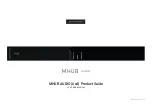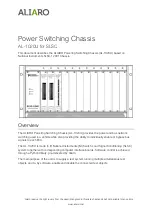
Shelf Manager CLI
Fortinet Technologies Inc.
minfanlevel
clia minfanlevel [<level>]
This command displays or temporarily sets the minimum fan level. The minimum fan level will return to the default
setting when the chassis power is cycled or the shelf manager reboots. Under normal conditions, the cooling
management algorithm gradually decreases the level for the fans in the chassis while thermal conditions stay normal.
The cooling management algorithm will not try to decrease the fan level below the minimum level specified by the
configuration parameter
MIN_FAN_LEVEL
or by this command. The minimum fan level affects only the automatic
management of the fan level by the cooling management facility.
Enter the command with no parameters to display the current minimum fan level.
Enter the command with an integer to temporarily set the minimum fan level (until the next chassis power cycle or shelf
manager reboot).
sel
clia sel [-v] [<IPMB-address> [<record-count> [starting-entry]]]
clia sel clear [<IPMB-address>]
clia sel info [<IPMB-address>]
The System Event Log (SEL) is useful for troubleshooting as shown in the examples below.
You can also use the Linux command
cat /tmp/messages
to view shelf manager system
log messages. This information can be useful for diagnosing system problems. This
information can also help Fortinet Support diagnose shelf manager system problems.
The
sel
command shows the contents of the SEL on the specified IPM Controller (at IPMB address 20h by default).
The optional
<record-count>
indicates how many records from the record number
<starting-entry>
in the
SEL are displayed. The optional parameter
<starting-entry>
is the entry number of the first SEL record to print,
relative to the beginning of the SEL. Both
<record-count>
and
<starting-entry>
must be within the range of 1
to the total number of records in the SEL. The default value of the optional parameter
<starting-entry>
is 1. The
<starting-entry>
is independent of the
RecordID
field of the SEL record.
The command displays the following information fields for each SEL record:
l
Record ID
l
Record type (currently only events are supported, for which the word “Event” is shown
l
Timestamp (for timestamped records)
l
Source address parameters: IPMB address, LUN and channel number
l
Type and number of the sensor that generated the event
l
Event/reading type code
l
3 bytes of event data, in raw and processed (if available) formats.
The command
sel clear
clears the SEL on the specified IPM Controller (at IPMB address 20h by default). The
-v
option makes the command output more user-readable.
The following example messages show that the hot swap state of FRU 0 at address 0x86 (a FortiGate-5000 series
board in physical slot 6) has been M7 (communication lost) for 11 seconds. The first message indicates when the board
went from the M4 state (active) to the M7 state (communication lost) and the second message shows when the board
went from the M7 state back to the M4 state.
FortiGate-5144C 6.2.3 Chassis Guide
56







































